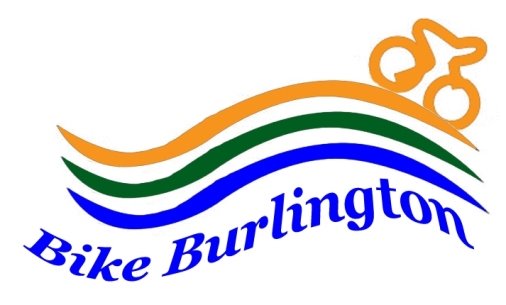A scant few do it, but the majority won't.
I often cycle down the new & improved Brant St. south of the QEW. Beautiful bike lanes stretch from MEC to Caroline St. At several intersections, the solid white bike lane becomes a dashed line.
 I've noticed motorists are paying attention to cyclists - especially those motorists turning right off Brant St. However, not all motorists are paying attention or know it's OK to cross the line - sometimes!
I've noticed motorists are paying attention to cyclists - especially those motorists turning right off Brant St. However, not all motorists are paying attention or know it's OK to cross the line - sometimes!I'm referring to the rare motorist who crosses the line and encroaches into the bike lane to turn right off of Brant St. As a cyclist, I am dismayed if I see a car in my bike lane. Who is right and who is wrong?
There is a serious possibility of cyclist/motorist collisions at these intersections. I've seen it. I've experienced it. Motorists turning right may encounter an unexpected cyclist. Imagine the scenario where a motorist is waiting for a pedestrian to finish crossing the road on a green light. Meanwhile a cyclist 100 metres behind the motorist (waiting to turn), sees a green light and increases his speed because the bike lane is clear. As the motorist begins to turn, the cyclist arrives at the intersection, in his clear bike lane.
 I've checked with the MTO and the correct protocol at the intersection with a dashed bike lane is for the motorist to enter the bike lane if it is safe to do so.
I've checked with the MTO and the correct protocol at the intersection with a dashed bike lane is for the motorist to enter the bike lane if it is safe to do so. "The Highway Traffic Act (HTA) requires drivers making right-hand turns at intersections to be either in the right-hand lane where the lane is marked, or to be as close to the right curb or edge of roadway where the lane is not marked, and to indicate the intention to turn by activating the signal light or signalling manually. A cyclist intending to continue straight across the intersection that approaches this vehicle from behind is required by the HTA to overtake it on the left, if it is safe to do so.
Bicycle lanes do not continue across an intersection and tend to end in broken white lines just before them. The broken lines indicate that vehicles making a right-hand turn can enter that portion of the lane to make the right turn, if it is safe to do so. A cyclist intending to continue straight across the intersection that approaches a vehicle in their path ahead signalling or making a right turn, should only over take it on the left if it is safe to do so. A cyclist should never pass a right-turning car on the right side as it would put the cyclist in a vulnerable position."
It's OK to cross the line if it's dashed....


"Beautiful bike lanes stretch from MEC to Caroline St."
ReplyDeleteKevin's comment:
I would not call the Brant Street lanes "beautiful." Words that rise to my mind range from "crappy" to "dangerous by design."
An example of dangerous by design is near Ghent street where the bike lane is in the door zone of adjacent parked cars. This makes the bike lane the most dangerous place on the entire road in which to ride my bike.
Throughout Brant Street, the bike lane width is inadequate, there are no protective barriers to keep cars out and the intersections are insanely dangerous.
These lanes fail the 8-80 test. Would you send your 8-year-old daughter cycling to school on these lanes? I wouldn't either.
My 74-year-old mother flatly refuses to cycle on Brant Street or in anything else short of proper Dutch-style protected lanes. "At my age, I am not going to play tag with two-tonne lethal weapons."
It doesn't have to be this way. For example, here is a video showing how to do intersections properly:
http://www.youtube.com/watch?v=FlApbxLz6pA&feature=plcp
Hi Kevin.
ReplyDeleteThanks for your comment. Been away for a few days, unable to respond.
IMO, any bike lane is better than no bike lane. I agree the bike lanes lack the protective barriers but it's a step in the right direction. The bike lanes have already encouraged more users. As the numbers increase, more demands will be made for even safer bike lanes.